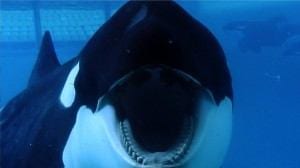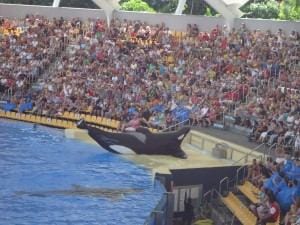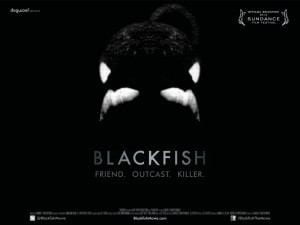 SeaWorld has been defending itself against the controversy stirred up by the documentary Blackfish, but the so-called “Blackfish Effect” continues to grow.
SeaWorld has been defending itself against the controversy stirred up by the documentary Blackfish, but the so-called “Blackfish Effect” continues to grow.
This month, Santa Monica Assemblyman Richard Bloom proposed legislation that would make it illegal to “hold in captivity, or use, a wild-caught or captive-bred orca for performance or entertainment purposes.”
Goodbye Shamu? Not so fast. Let’s look at both sides of the ongoing response to the documentary.
Blackfish makes it very easy to condemn keeping orcas in captivity. Almost too easy. SeaWorld claims the film is sensationalist rubbish, but it has not fully addressed the issue of whether orcas are suitable for captivity. Kept in captivity, orcas are deprived of intellectual and physical challenges, including strategic hunts and dozens of miles of swimming per day. Orcas use echolocation for hunting, calling other killer whales, and understanding their surroundings. Being in a confined tank prevents the proper use of echolocation.
 In the wild, orcas form complex social networks with up to 50 other killer whales. Those relationships can be tempestuous and orcas have been known to fight with each other. However, in the wild they can move apart to let things settle and mingle with others, which isn’t possible in SeaWorld pools.
In the wild, orcas form complex social networks with up to 50 other killer whales. Those relationships can be tempestuous and orcas have been known to fight with each other. However, in the wild they can move apart to let things settle and mingle with others, which isn’t possible in SeaWorld pools.
Kelly Flaherty-Clark, head animal trainer at Orlando SeaWorld, made an interesting counter-argument: “[There’s] nothing that compares to watching the impact that the relationship that you have [with the orca] has on the public.” A human-orca bond is the only undeniable benefit that you can’t get in the wild, so the grounding question with the issue should be: is that enough to justify keeping them in captivity?
While Blackfish portrays the dangers of keeping orcas in captivity, the general criticism is that the film does not provide appropriate context. One of Blackfish’s main arguments is that attacks and fatalities are frequent with orcas in captivity, but there are only a few cases of attacks, and no fatalities, in the wild. While true, this is misleading. There are a great deal more interactions in captivity than in the wild, so if you could add the numbers, the comparison would likely be without value. Vice President of Zoological Operations at SeaWorld San Diego, Michael Scarpuzzi noted, “the literally millions of safe interactions we have had with killer whales over [50 years]” shouldn’t be ignored.
The film’s ending climax is also in dispute. Senior trainer Dawn Brancheau’s death in 2010 by Tilikum is used to spearhead the film’s point, but Dawn’s family has come out against the film. The Brancheau family argues that Blackfish misrepresented Dawn’s trainer abilities and beliefs on captive orcas. Other trainers have also spoken out against the film. Bridgette Pirtle and Mark Simmons contributed to the film, but have now come out strongly against it. The trainers believe that Blackfish omitted counterarguments in favor of emotional manipulation to make a better story. Former trainer Kyle Kittleson also uploaded a negative YouTube response.
 This isn’t the only example of Blackfish editing for shock value. The film begins with audio from a 911 call, where you hear that a trainer has been killed by an orca, and that her arm has been torn off and eaten. Turns out, the arm was never torn off or swallowed, and this was known to be false immediately after the incident.
This isn’t the only example of Blackfish editing for shock value. The film begins with audio from a 911 call, where you hear that a trainer has been killed by an orca, and that her arm has been torn off and eaten. Turns out, the arm was never torn off or swallowed, and this was known to be false immediately after the incident.
Despite criticism of its filmmaking, Blackfish‘s impact continues to grow. In response to the film, Willie Nelson and Heart canceled their SeaWorld shows. In addition, petitions are live on Change.org, and protesters continue to gather in person. Last week, SeaWorld turned 50, but celebrations were marred by protesters in San Diego and Orlando.
PETA spokesperson Matt Bruce commented,“Dedicating the month of March to SeaWorld’s 50th anniversary is shameful, and [San Diego] Mayor Faulconer should be condemning SeaWorld for its cruel treatment of orcas and other animals instead of celebrating its greed.”
By Cody Brooks for PeterGreenberg.com












